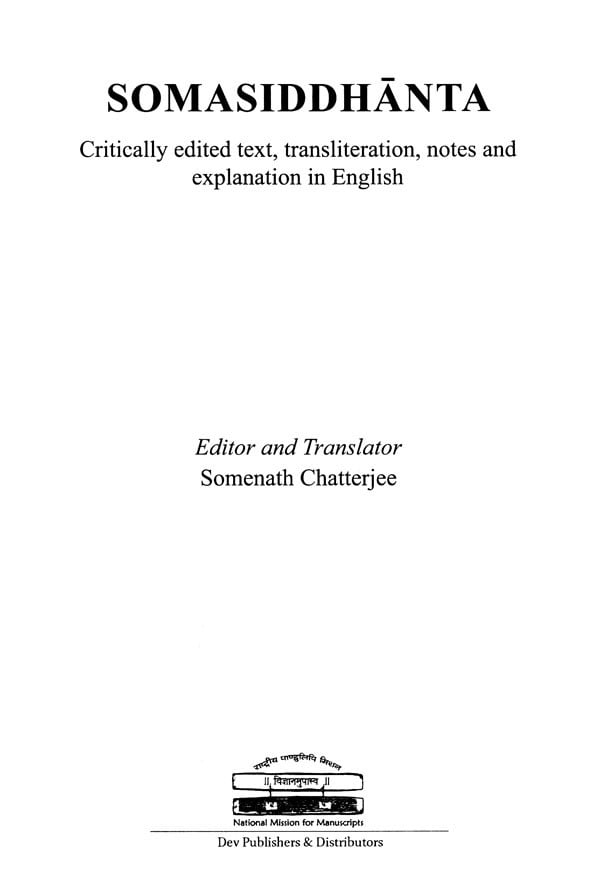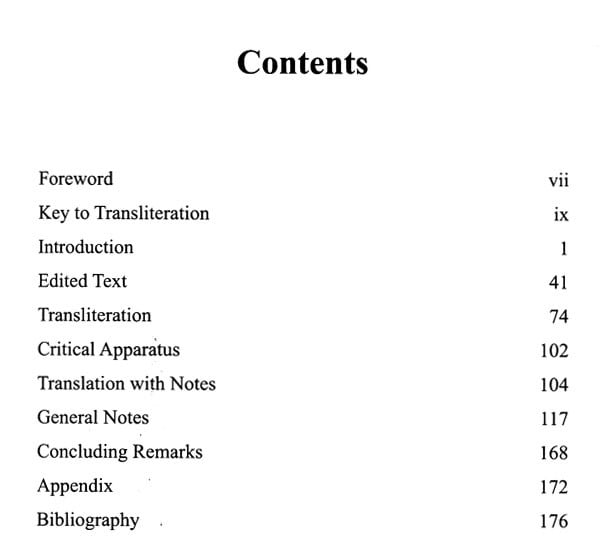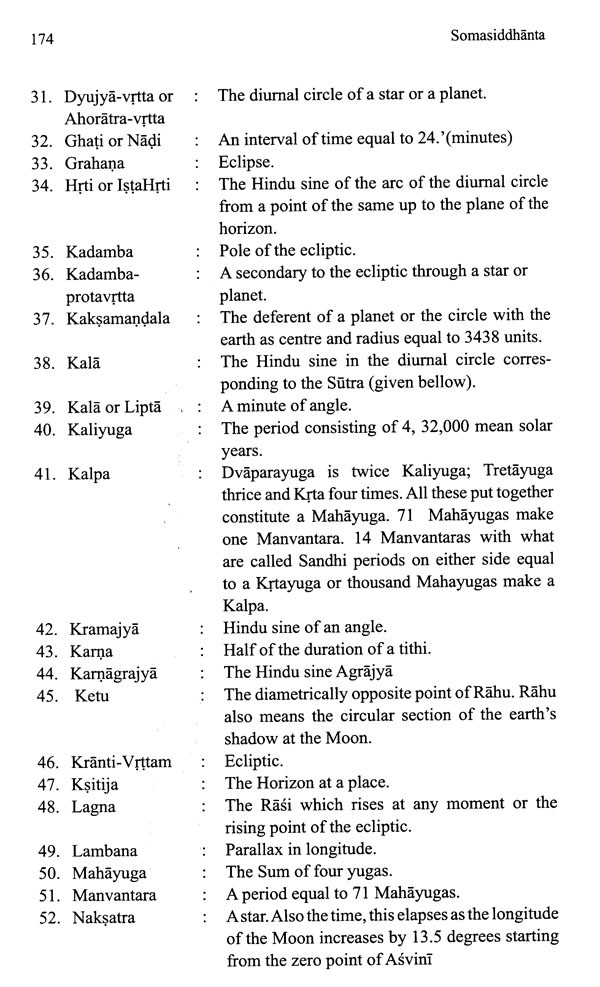
| Specifications |
| Publisher: National Mission For Manuscripts | |
| Author: Somenath Chatterjee | |
| Language: Sanskrit and English | |
| Pages: 184 | |
| Cover: HARDCOVER | |
| 10.00 X 7.00 inch | |
| Weight 440 gm | |
| Edition: 2021 | |
| ISBN: 9789380829807 | |
| UAQ106 |
| Delivery and Return Policies |
| Usually ships in 5 days | |
| Returns and Exchanges accepted within 7 days | |
| Free Delivery |
NMM has taken up a project for publishing rare and unpublished manuscripts in three forms: (a) facsimile, (b) critical edition with annotation, and (c) critical edition with translation. This series has been named "Prakāsīkā".
This book 'Somasiddhanta' an astronomical text is getting published by the Mission, under its Prakashika series along with translation in English.
This edited text 'Somasiddhanta' contempo rary with modern Süryasiddhanta consists of three thousand and thirty five verses. The text is presented in the form of a dialogue between Candra and Saunaka. It follows Suryasiddhanta and according to S. B. Dikshit, modern Pañcasiddhantika replaces Paitâmahasiddhanta and Pulisasiddhanta with Brahmasiddhanta of Sakalyasamhita and Somasiddhanta. In ten chapters, the text explains contemporary astronomical observations.
Gradual discoveries related to astronomy contributed to its rich heritage and they are recorded in writing during first to sixth century C.E. Astronomer of India observed, systematically analysed and recorded the positions of planets with the passage of time. And thus the old Süryasiddhanta was composed in 400 C.E. which was widely accepted and followed throughout India. Later in the seventh century, a modified version of old Süryasiddhanta was composed.
The present publication, 'Somasiddhanta' is contemporary of the new Suryasiddhänta. The name of the author of the Somasiddhanta is not known till date. The uniqueness of this Siddhantic text lies in its encompassing all aspects of astronomy in a compact form.
Shri Somenath Chatterjee, an independent researcher on history of science and astronomy, has done a commendable job by preparing the critical edition of the Somasiddhanta. He has also explained the text in English along with the diagrams, wherever necessary for easier understanding of the content.
I am sure researchers and persons interested in astronomy all over the world, will be benefitted by this publication.
Varähamihira is the first scholar who felt the importance of astronomical manuscripts and compiled them in the first half of the sixth century. Till date, the best evidence of ancient astronomical knowledge of India contains in the Pañcasiddhantikä of Varähamihira i.e. Paulisasiddhanta, Romakasiddhanta, Vasisthasiddhanta, Surya siddhanta and Paitāmahasiddhanta. It is no doubt a great work indeed and Pt. G. Thibaut and Sudhakara Dvivedi translated this whole work with an elaborate introduction which was published in 1889. After this no such work is found based on original manuscript. S.B. Dikshit introduced a new idea of modern Pañcasiddhäntikā. He included Somasiddhanta and Brahmasiddhanta of Sakalyasamhita excluding Paulisasiddhanta and Paitāmahasiddhanta. Dikshit said, "The Pancasiddhantikā included all the siddhantas excepting Soma siddhanta.""...these Siddhantas and those which are to be considered now, are different, and this fact will be further corroborated by the discussion which will follow. The Siddhantas whose study is going to be made now are extant and different from those belonging to the Pañcasiddhantikä group; and that is why the epithet 'modem" has been applied to them.
**Contents and Sample Pages**








Send as free online greeting card

Visual Search